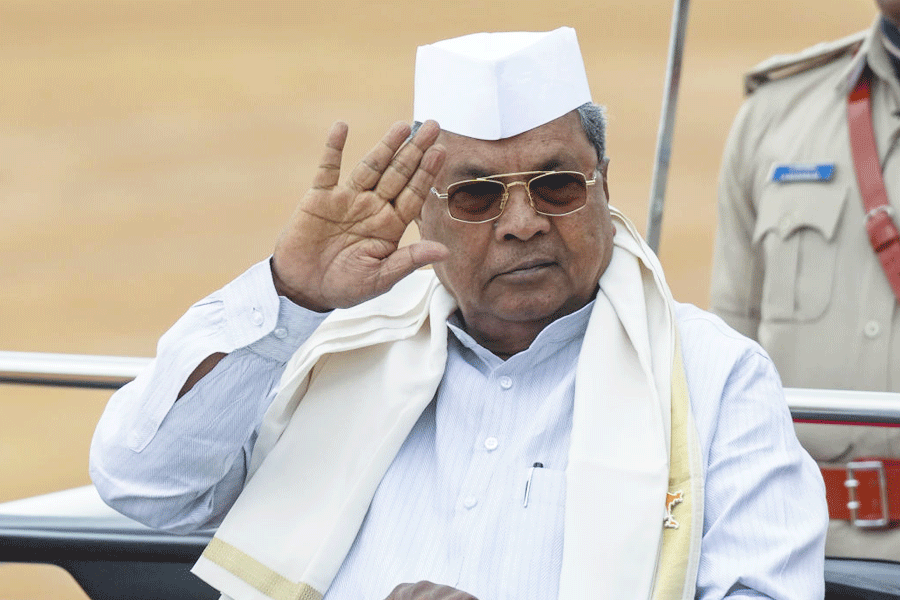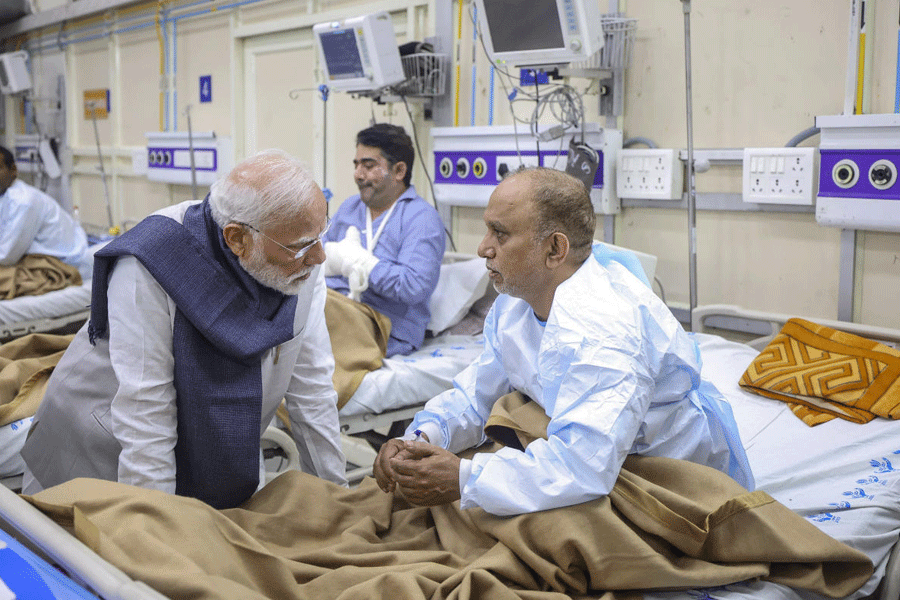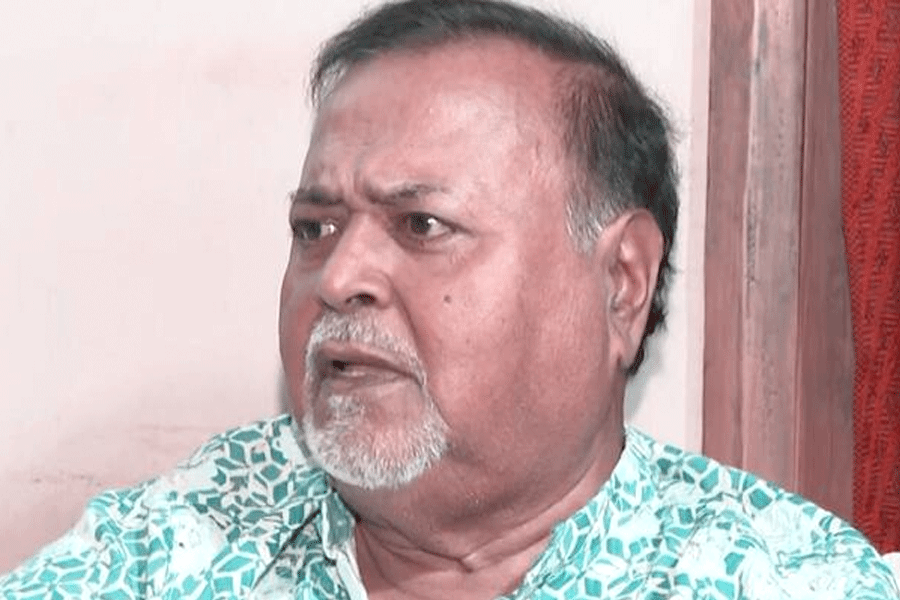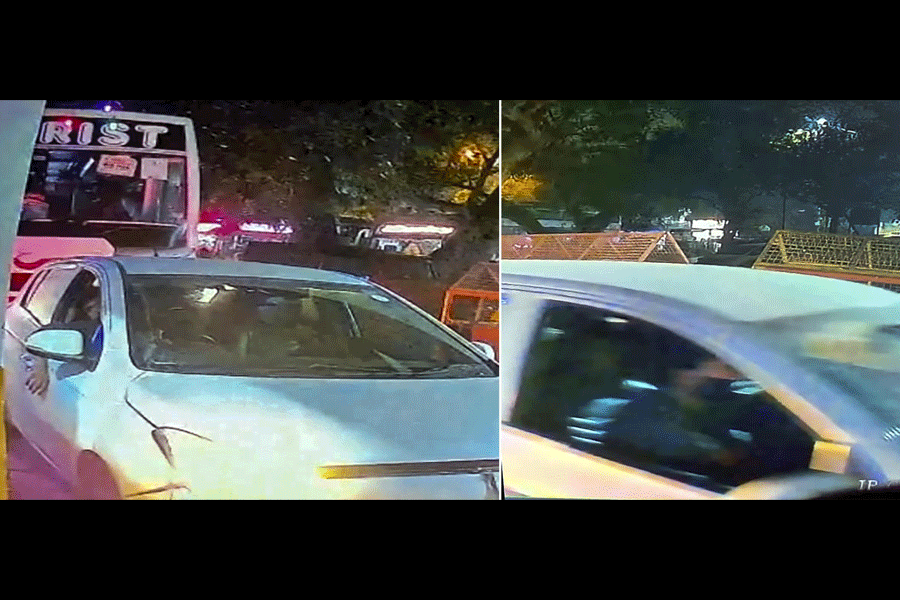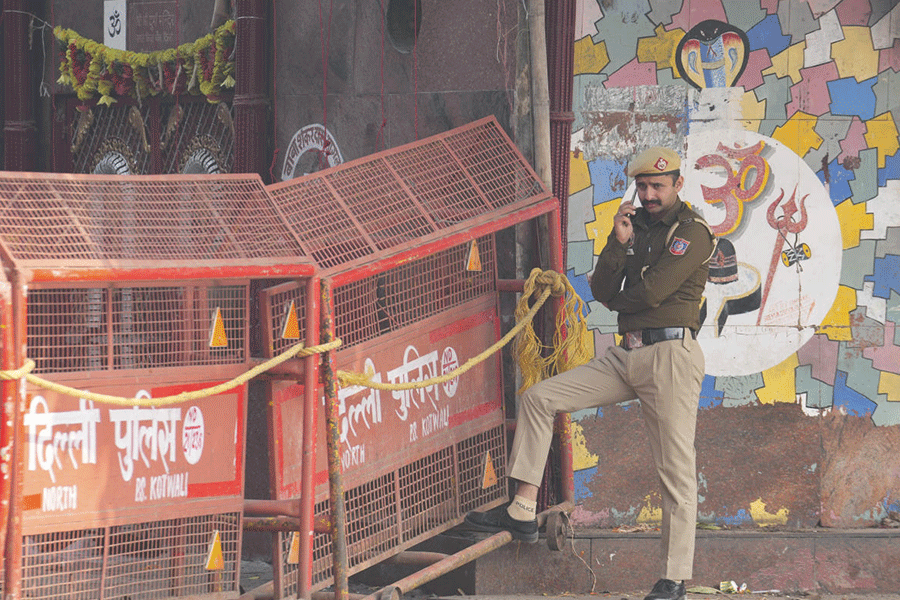
The 65th year of the Dover Lane Music Conference was a celebration of the legacies, repertoires and traditions of Indian classical music which flowed through the ages and generations. A special morning session of this festival, which lasted for four nights, was inaugurated by Pandit Jasraj. He presented the Raga Shuddha Sarang, and the other shades of Sarang later. Right from the beginning, the audience witnessed the stream of musical inheritance, which started with the sweet shehnai performance in the Raga Bilaskhani Todi by Hassan Haider Khan with his troupe.
Ayaan Ali Khan, carrying the lineage of one of the brightest gharanas of the sarod, played an alaap, jor and jhala in Jhinjhoti, and continued with the gats in Kamod, accompanied by Anindya Chattopadhyay on the tabla. Ayaan is known to play long, complicated taans which enchant the audience. The presentation by Ustad Vilayat Khan's nephew, Irshad Khan, showed the distinguished influence of a very special gharana. Irshaad played the alaap, jor and jhala of the Raga Darbari in Surbahar, followed by gats of Behaag on the sitar. His exquisite style of playing enhanced the mood for the audience. Rather, it was Vilayat Khan's son, Shujaat Khan, who seemed a bit scattered while playing Sanjhgiri, a blend of Puriya, Yaman, Purvi and Bhatiyar. His alaap was charming, but he was not able to sustain the mood till the end.
Amaan Ali Khan (picture, left) started an alaap in Behaag on the sarod, followed by a beautiful gat in dhamar. A rare mix of quietness, spontaneity, musicality and mastery, the demonstration of his rigorous training was par excellence. Amaan played rupak and ektaal gat in Charukeshi, and touched his listeners with some unique movements of the keynotes. He concluded his performance with the Raga Lalit, and proved himself as the most worthy torch-bearer of this generation. Satyajit Talwalkar and Fateh Singh Gangani accompanied him on the tabla remarkably.

Bahauddin Dagar, the representative of the illustrious Dagar family, along with the vocalist, Nirmalya Dey, presented the Raga Jog on the rudra veena. It did not meet the expectations of the audience. But Shaukat Hussain Khan's elongated (nom tom) alaap in Jog demonstrated the traits of the famous Agra Atrauli Gharana. The vilambit and the drut kheyals in his rich voice, along with the beautiful rendition of gamaks, was reminiscent of doyens like his father, Sharafat Hussain Khan, and Faiyaz Khan. His rendition of Paraj Kalingda in dadra was beautiful; it was followed by a bhajan in Mishra Kafi.
The voice of the Jaipur-Atrauli Gharana, Ashwini Bhide Deshpande (picture, right), started the vilambit kheyal in Jhinjhoti, which is rarely rendered in vocal recitals. The softness of her voice in the vistaars, and its dominance during the taans added an exceptional dimension to the atmosphere. The kheyals in Shahana Kanada and Suha Kanada flourished with the mellifluous vocals of the artist. They were followed by Meera bhajans. Kaivalyakumar Gurav, a prominent name of the Kirana Gharana of this generation, evoked expectations with his beautiful start on the Raga Nat Bhairav; yet, he could not hold on to the beauty for long, on account of his inclination to focus on the technicalities of voice and the presentation style. The young, talented Apoorva Gokhale, on the other hand, gave an arresting performance in the Raga Chhayanat. The clarity and freshness of her voice helped the raga bloom fully. She brought out the quintessence of Malgunji as well. The Carnatic vocalist, Sudha Raghunathan, presented Varnam (Behaag) and the Shiv vandana in Natya. These were rhythmic; the kriti of Thyagaraja in Panthuvarali was sweet as well. But her rendition of the Raga Revati and "Krishna ni Begane Baro" could have been better.
The Raga Bageshree was enjoyable in Anjana Nath's well-trained voice, yet it could have been more melodious. She touched the audience with her verse of Jaidev in Desh. The audience endured a disturbed performance of Bhairav and Bhatiyaar by Rashid Khan. But the tabla duet of Shubhankar Banerjee and Yogesh Samsi enhanced the energy levels of the festival. Ajoy Chakrabarty's kheyals in Abhogi could have had more variation. Rajan and Sajan Mishra began with Bhatiyar: it was interesting, but the same old mechanism of vistaars and taans rendered the raga as well as their performance of Bairagi less exciting. Sisirkana Dhar Choudhury's violin, for Suradhwani and Tarangini, was attractive, but the expected sweetness was missing. Pandit Shivkumar Sharma's performance of Bageshree on the santoor was escalated with great care, but he could have played some other raga, too. In spite of some sluggishness owing to seniority, Pandit Hariprasad Chourasia's flute manifested the magic of Maru Bihag, and continued with Hamsadhwani, Durga and Jayjayanti briefly.
When Ustad Amjad Ali Khan took the stage, he gave his listeners a soulful treat by presenting some exclusive gats of his 'Ghar' in Behari, Miyan ki Malhar and Durga. With his Malkauns alaap, the artist proved that the aesthetics of a raga can change the surroundings. He did not forget to fan the sparks of nostalgia with the tunes of Rabindranath Tagore. The concluding dawn of the festival was fulfilled with his mesmerizing Komal Rishabh Asavari, and came to an end with sparkling Bhairavi gats. It was a process of self-exploration, for the artist and the listeners, which sowed the seeds of belief and love for music. Anubrata Chatterjee and Shubh Maharaj, who accompanied the sarod maestro, exceeded themselves. The tabla accompaniment of Samar Saha, Abhijeet Banerjee, Ramkumar Mishra and others, as well as Rupashree Bhattacharya, Jyoti Goho and Hiranmoy Mitra on the harmonium left a mark.


